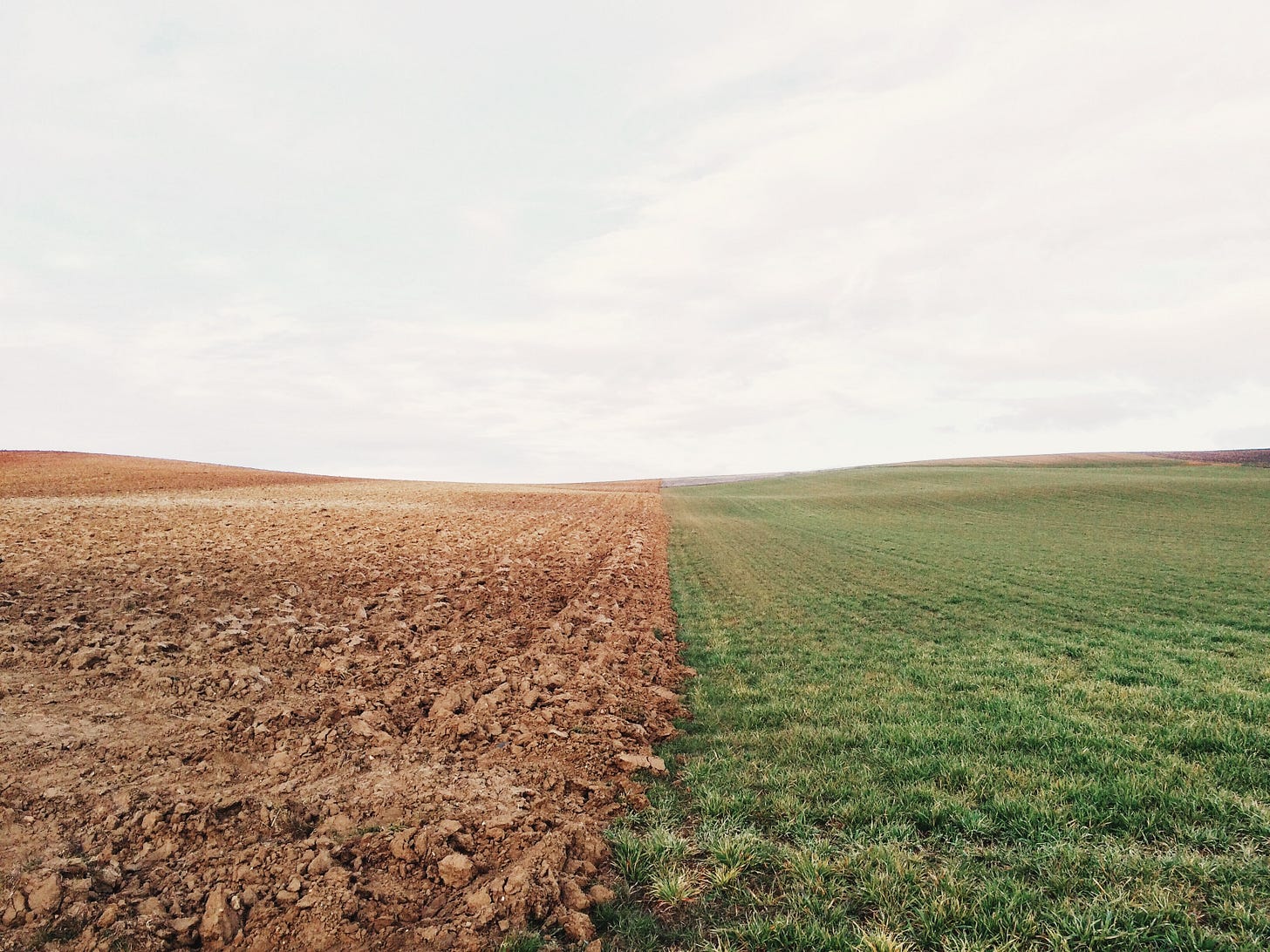All Flesh is Proud of Its Wounds
How to complicate the narrative of scar tissue + kiss the scar + uncover inherent desire for pain + illuminate the holiness of wounding + acknowledge the unknowable nature of pain's "goneness"
One day when I was three years old, I tripped while running on the sidewalk. Before I fell, I flew, flew in my brown saddle shoes with their slick leather soles and loose laces, my white acrylic knee-highs slouched around my ankles. Sloping above me, the ancient glacial rock of Lake Superior’s North Shore, dandelion and lupine sprouting from its crevices. Below me, another heaving, cracked-up sidewalk like all the others then and now in the West End of Duluth, Minnesota. When I ran, I soared. When I crashed, I crashed.
There was loose gravel on the sidewalk, and a round pebble lodged itself under the skin of my split knee. No one washed the cut. The blood dried, my knee scabbed over, the split skin fused itself back together, but the pebble remained, a pea-sized bump. For many years, I could wiggle the hidden pebble from side to side with my finger. The sensation of rock on bone was pleasantly painful, a sharp surprise.
One day the pebble dissolved. I don’t know exactly when, because it left a hard lump of scar tissue in its place, which itself softened only slowly, over time, so that the moment of its goneness was unknowable, even to me.
In the above passage, from The Part That Burns, I interrogate the way in which scar tissue both persists and transforms, the way it changes us in its wake, even if and when it disappears entirely.
In her wrenching and brilliant poem, “For What Binds Us,” Jane Hirshfield also writes scars, in the form of proud flesh, the name used to describe how, when flesh grows back over a wound on horses, those scars can be raised and dark.
Hirshfield writes, “all flesh is proud of its wounds.”
She goes on to explore this concept as it pertains to relationships, in the poem’s stunning conclusion:
And when two people have loved each other
see how it is like a
scar between their bodies,
stronger, darker, and proud;
how the black cord makes of them a single fabric
that nothing can tear or mend.
When two people have loved each other, see how it is like a scar between their bodies … a single fabric that nothing can tear or mend. Tear or mend! I am not certain a truer line has ever been written.
And this, for me, exemplifies the rich, endless well of possibility that scars hold for revelation of meaning and even beauty in our lives and on the page.
In a similarly gripping display of complexity, Truong Tran, in his poem “Scars,” highlights his childhood wish for a scar just like the one his father has, from a bullet lodged in his left thigh:
as a child
i wanted a scar just like my father’s
bold and appalling a mushroom explosion
that said i too was at war
instead i settled for a grain of rice
a scar so small look closely there
here between the eyes
a bit to the right
there on the bridge of my nose
father says i was too young to remember
it happened while i was sleeping
leaking roof the pounding rain
drop after drop after drop
And while I myself am rather averse to and deeply skeptical of the overuse of the word (and the concept) of “healing,” I am wholly taken in by the way Seattle poet Pesha Gertler pulls us through the portal of “yes” toward a surprising epiphany about residual pain:
By Pesha Gertler
Finally on my way to yes
I bump into
all the places
where I said no
to my life
all the untended wounds
the red and purple scars
those hieroglyphs of pain
carved into my skin, my bones,
those coded messages
that send me down
the wrong street
again and again
where I find them
the old wounds
the old misdirections
and I lift them
one by one
close to my heart
and I say
holy holy
That my untended wounds and old misdirections could also be … holy? This, for me, feels surprising, profound, and deeply true.
And that—the possibility of surprise—is for me the crucial key for making writing about scars effective. If it’s only about so-called healing, or only about suffering, we risk falling into cliché or melodrama. What I find myself responding to in these poems by Hirshfield, Tran, and Gertler is the complexity, the acknowledgement that scars are rarely just one thing or the other, but rather a mysterious echo of pain that we might, for reasons hard to understand, also find pleasurable, as suggested by Rosa Chavez in the title of her poem, “I Like to Kiss Scars.”
For this week’s writing exercise, we’ll explore this complexity in all its messiness and contradiction, seeking to illuminate some small shard of truth in the experience of suffering and surviving that is ultimately at the core of human existence.
This prompt will encourage you to actively stare into that obstinate messiness, and to search for where you can complicate the narrative of scar tissue, which is to say, find the kissable part of the scar (Chavez), uncover the inherent desire for pain (Trong), illuminate the holiness of wounding (Gertler), acknowledge the unknowable nature of pain’s “goneness” (Ouellette).



